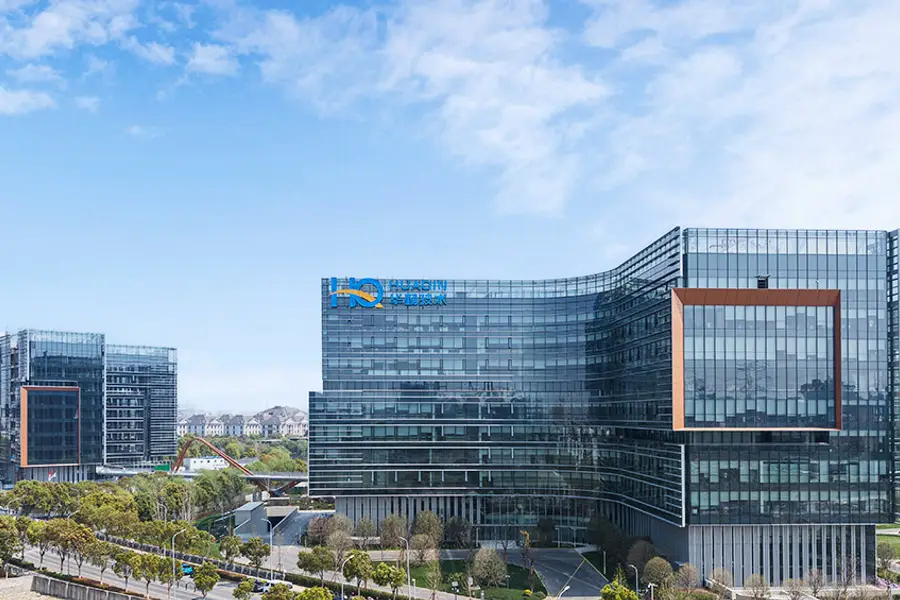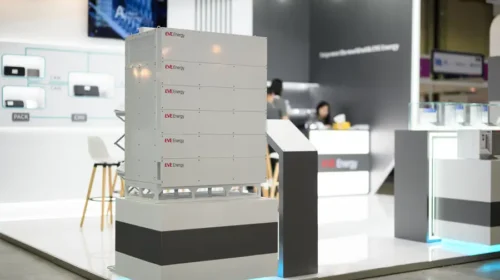Huaqin rides data center boom to Hong Kong IPO

Data center products, including servers and switches, surged past smartphones to become the ODM’s biggest revenue source in the first half of the year
Key Takeaways:
- Huaqin’s strategic expansion from its original ODM electronics business into data center products helped to double its revenue to 83.9 billion yuan in the first half of 2025
- The contract manufacturer is betting on AIoT products and robotics to boost its margins, but remains dependent on more traditional products like smartphones and tablets
By Hugh Chen
What do you do when your traditional business as an original design manufacturer (ODM) for electronics makers is quickly reaching a saturation point? If your name is Huaqin Co. Ltd. (603296.SH), the answer is you diversify into the data center products. Now, this company is taking its hybrid ODM-data center show to Hong Kong, where it filed to make a second listing last week to complement its current listing in Shanghai.
Huaqin raised eyebrows in 2017 when it first announced its data center move, which marked a major departure from its traditional business of contract manufacturing for electronics brands. The move required not only substantial investment but also that Huaqin build a new client book from scratch.
Fast forward to the present, when the unusual pivot now looks prescient. A surge in demand for computing power, particularly following the release of OpenAI’s ChatGPT, has sparked a boom in demand for data centers and related products, which have become a cornerstone of Huaqin’s business.
The fast-growing segment helped the company to more than double its revenue in the first half of this year, reaching 83.9 billion yuan ($11.8 billlion). Investors are embracing Huaqin’s transformative story, with its Shanghai-listed shares surging about 40% year-to-date.
That momentum may be a factor leading Huaqin to pursue a second IPO right now. The timing of its filing appears strategic, as it joins a wave of Mainland-listed firms seeking listings on the more internationally focused Hong Kong Stock Exchange. While Huaqin hasn’t disclosed its fundraising target, its choice of prominent underwriters CICC and BofA Securities suggests a substantial offering — probably at least $100 million — is in the works.
Founded in 2005 by Qiu Wensheng, a veteran of telecoms giant ZTE, Huaqin initially established itself as an independent design house for smartphone brands. The company gradually expanded to include contract manufacturing as well, while also broadening its product portfolio to encompass tablets, wearables and laptops. According to its preliminary prospectus, Huaqin now counts eight of the world’s top 10 smartphone brands as customers and, citing third-party research, was the leading global smartphone ODM by cumulative shipment volume from 2020 to 2024.
Margin quest
Huaqin’s financial reporting combines its data center products, primarily servers and switches, into a broader “computing and data center” segment that also includes laptops. This segment generated revenue of 42.2 billion yuan in the first half of this year – more than double the 17.4 billion yuan it generated in the year-ago period. The big rise lifted the segment to 50.2% of total revenue, moving it past the company’s older mobile terminals business, which contributed 35.3 billion yuan or 42% of the total.
Huaqin’s newer focus on data center products is understandable given the notoriously thin margins for contract manufacturing of electronics — a mature industry with many companies competing to manufacture devices from smartphones to laptops for other brands.
The company’s mobile terminals business operates on a 9% gross margin, which looks low but is actually better than many of its competitors. According to data compiled by local research firm YMH.Media, two other major smartphone contract manufacturers, Shanghai Longcheer Technology (603341.SH) and Wingtech Technology (600745.SH), reported even lower margins of 4.92% and 2.49%, respectively, for comparable business segments in 2024.
Such challenging economics have prompted industry-wide strategic shifts. Wingtech late last year announced plans to divest its contract manufacturing business to focus on semiconductor development, while Longcheer has pivoted to AR glasses.
Huaqin’s rapid growth in the data center segment has been largely driven by its partnership with Nvidia. The company has become one of the first manufacturers to adapt and mass-produce servers incorporating Nvidia’s high-end AI chips, allowing it to supply A800 AI servers to major Chinese internet companies in 2022.
While the pivot to the data center business has boosted Huaqin’s sales, the segment hasn’t done much to improve the company’s thin margins. Although it doesn’t provide specific profit margins for its data center products, its broader computing and data center segment operated on a gross margin of 7.5% in 2024, dropping to 5.9% in the first half of this year.
Such figures reflect the limited value that Huaqin adds to the data center products it manufactures – work that primarily involves assembling Nvidia chips into server systems rather than developing proprietary technology.
Huaqin’s profits are also growing rapidly, though slower than its revenue, reflecting the pressure on its margins. Its net profit totaled 1.9 billion yuan for the first half of this year, up 46% from 1.3 billion yuan for the same period last year.
Margin pressures aside, the data center pivot also carries significant risks amid escalating U.S. export restrictions targeting the Nvidia products that Huaqin relies on. The situation has grown more complex with recent Chinese government interventions, as Beijing discourages major Chinese tech firms from purchasing Nvidia chips — part of broader efforts to boost domestic semiconductor industry development.
In pursuit of higher margins, Huaqin has intensified its diversification into smart devices, including XR and automotive systems. Such products, included in its artificial intelligence of things (AIoT) segment, have demonstrated stronger profitability. But even there, the segment’s gross margin eroded sharply from 16.9% in 2024 to 11.5% in the first half of this year.
The company’s expansion strategy has also led it into more ambitious territory, particularly in robotics. In early 2025, Huaqin acquired 75% of Shenzhen-based Hctrobot, a company specializing in household cleaning and companion robots. Hctrobot’s product portfolio includes robotic vacuum cleaners, pet care robots, and healthcare companion robots, along with core components for these devices.
Huaqin’s ambitions extend well beyond basic applications like vacuum cleaners. According to investor communications from January 2025, the company plans to establish robotics as a core growth driver, progressively expanding from entry-level applications like cleaning robots to more sophisticated products like humanoid robots.
While these emerging product segments could become an important revenue source down the road, their current contribution is still marginal. Developing such new products demands substantial investment, driving the company’s R&D expenses to 5.2 billion yuan in 2024. It spent nearly 3 billion yuan on R&D in the first half of this year, up about 30% year-on-year.
At the end of the day, Huaqin’s long-term success will ultimately depend on its ability to establish strong positions in emerging product areas like robotics and AIoT. However, in the near term, the company remains heavily dependent on its core lines in computing and telecoms devices. The company will need to engage in a delicate balancing act going forward, requiring it to run its traditional business profitably while using those profits to fund ambitious expansion into higher-margin segments that could secure its future growth.
To subscribe to Bamboo Works weekly free newsletter, click here






